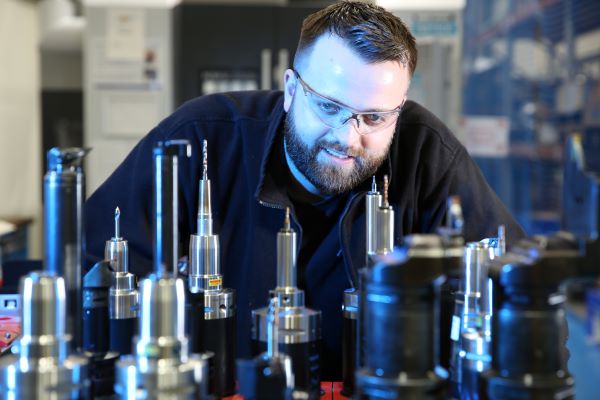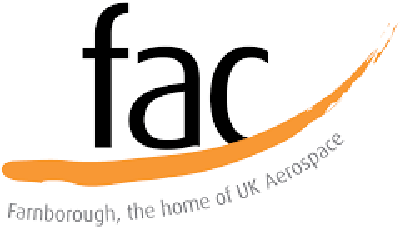A crowning achievement
Reflections in election season on receiving the Kings’ Award for Enterprise Innovation by Gareth Morgan, co-founder of precision engineering technology firm, AML Sheffield.
Not since George Osborne championed a “Britain carried aloft by the march of the makers” in 2011 has a Conservative Chancellor put advanced manufacturing centre stage in the way Jeremy Hunt did in both his first Budget and the follow up announcement of a £4.5 billion Advanced Manufacturing Plan.
While Labour greeted the plan as little more than warmed-up old announcements, there was no disagreement between the main political parties competing in the General Election on the need for state investment in advanced manufacturing, nor with the decision to put the lion’s share of this R&D funding into the high export earning aerospace and automotive sectors.
For a precision engineering technology company like AML, and the thousands like us who are sharply focused on aerospace, energy and defence, this bipartisan approach to advanced manufacturing is a welcome change from almost a decade of internal dispute within the various Tory-led administrations since 2010. So how can our experience as a King’s Award winning innovative business help shape future of any advanced manufacturing strategy?
The first thing to note – and fortunately for our industry — the Aerospace Technology Institute (ATI) survived years of Tory party turbulence. Over the last decade it has invested £3.6 billion in “a long-term plan to produce more than 400 cutting-edge aerospace R&D projects across the UK, driving world-class research in sustainable aviation and supporting thousands of jobs”.
It was AML’s privilege to deliver one of these cutting edge projects between 2020 and 2023. Our efforts produced a near two fold improvement in efficiency, effectively doubling the rate of production of jet engine aerofoil manufacture enabling our client to capture a greater share of a market segment forecast to reach $9 billion by 2028.
For AML itself, the innovations led to the creation of eight new roles — six machine operators and two manufacturing engineers – supporting the new production cell built to manufacture these components. Several existing employees and apprentices working on the cell have been trained to program and operate it, extending their knowledge and experience in a way that will serve them well throughout their careers.
Perhaps most important for AML, our success in this project led to us receiving the King’s Award for Enterprise Innovation: our proudest moment to date. For a spin-out from the Rotherham-based Advanced Manufacturing Research Centre (AMRC) that has gone from two co-founders and £90,000 turnover in 2008, to a 100 plus workforce and a turnover of £11 million, this is a major achievement. One made possible, in no small part, by the brilliant people skills of our Operations Director, Mark Hands, who started with AML as a machinist 14 years ago.
The big message for politicians competing in this election is that ATI support in match funded R&D demonstrate what UK aerospace OEMs and their supply chains can achieve when manufacturers have a public sector partner with a long term vision and the financial fire power to fund major innovation projects.
These investments, all match funded by the private sector, are essential to maintaining the UK aerospace industry’s position as the second largest in the world behind that of the United States, with a staggering 70% of domestic aerospace production being exported around the world.
As we run up to the Farnborough Air Show it is also worth reflecting that the aerospace sector directly employs 108,000 people and supports over 5,200 apprenticeships across the UK: delivering high value jobs for a highly skilled workforce. The UK aerospace sector exports £18.6bn and had a turnover of £27 billion last year.
Since we received notification of the King’s Award, it has given us pause to reflect on what we have learnt and how that might help others in our industry. Observations that also have implications for politicians and public policy makers at both the national level, and in the devolved nations and regions on how to support innovation in real places.
The first thing to note is that the aerospace, defence and energy industries have extended and fragmented supply chains where smart, smaller companies can come to occupy positions of power by innovating key components and systems within the production process. You don’t need to produce and innovate the complete product to unlock a significant profit share of the final sale. It’s the same in tech. Ask HP or Dell whether it is them or Samsung and Intel who enjoy the best profit margins when a consumer buys Dell or HP computers.
The lesson for policy makers and industry is to identify where there are niche capabilities in fragmented global supply chains that open up new markets and products. Know your (region’s) strengths, identify weaknesses and gaps in the supply chains and exploit them both to grow market share, increase profitability and onboard skilled talent.
The second observation is that the customer in these sectors is almost inevitably an innovator. So, it’s important to be in tune with their direction of travel. In the King’s Award case for AML, the prime was exploring multiple manufacturing innovations, from novel design elements, new materials and technologies to achieve improvements in performance, weight and emissions levels being demanded by aircraft manufacturers.
This combination of high demand and high technological requirements from an existing customer presented a fantastic opportunity for AML to develop a new aerofoil manufacturing process that met the stringent demands of the next generation of business aircraft engines. It took us into the relatively unknown territory of automation and robotics, but our long term relationship with the AMRC gave us the confidence to rise to the challenge.
The third insight is the power of thinking laterally. The ATI project showed that innovation does not have to be an entirely new product or process to have a major impact on productivity. AML recognised that we could significantly reduce the cost and lead time of jet blade production by applying technologies and techniques used in high throughput lean industries such as automotive.
Thinking laterally could also mean using a more traditional manufacturing technique such as forging that has been ignored by a client to unlock efficiencies. The use of forged material rather than bar stock results in less material usage and waste. As the bulk of carbon emissions related to machined metal alloys is in the raw material production stage, reducing material usage in this way significantly cuts the emission profile of the final product.
Fourthly, the crucial role of digital and data. AML is now a digitally driven data business. Data informs everything we do. But getting there required support. In our case, it meant engaging with the brilliant team at Sharing in Growth. Our “war room” is now the industrial equivalent of the Starship Enterprise flight deck. No more Monday morning mayhem where people spend hours sifting through data, organising it, turning it into graphs and charts. It’s all there in real time dashboards, freeing us to interpret the data and make better informed decisions.
Fifth, is people and skills. A business with a digital thread running through everything it does needs scarce, digitally savvy people. And that requires a readily available talent pool. Here we benefit from the foresight of AMRC founders Keith Ridgway and Adrian Allen who established the AMRC Training Centre to produce talented young engineers fluent in digital languages.
In addition, we have a devolved administration in the South Yorkshire Mayoral Authority whose Mayor, Oliver Coppard, understands the value advanced manufacturing brings to the regional economy. They too have helped fund the skills and talent pipeline we need to keep innovating.
The sixth observation is the benefit that comes from having good parents. As the first spin out from the AMRC it was inevitable that innovation would be woven throughout our DNA. As a member of the founding AMRC team – and being a passionate lacrosse player at the time – I quickly came to understand the power of the “shot clock” in creating a results driven culture where every team member has a crucial role to play in putting the ball in the net.
The AMRC shot clock was five years to prove itself or die. It proved itself, time and time again. AML’s mission from the start was to make quality components to sell to the most demanding firms on the planet: and that everything else was just noise. We are still using the shot clock.
And last but not least: it helps immensely to have a supportive extended family. Or what the American economist Michael Porter calls “clusters”. The truth is, AML doesn’t win it on its own, it wins it by being part of the advanced manufacturing cluster or innovation district on the Rotherham and Sheffield border.
The ATI project could not have been done without the robotics R&D talent in the AMRC’s Factory 2050. Over the years we have also been able to benefit from the AMRC’s work with Boeing on gears. This has helped us develop a truly novel manufacturing process with applications for the energy sector. But that is another story.
The big lesson here is that being part of an advanced manufacturing cluster or innovation district in South Yorkshire puts us on the global stage. It makes us part of a bigger team. It gives us visibility and puts us up against the best in the world. Our digital shot clock is still an essential tool. It enhances the pace of our innovations and encourages offensive action. A score for AML is a score for South Yorkshire and a score for UK manufacturing. A crowning achievement.






